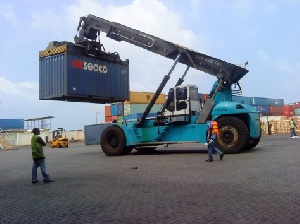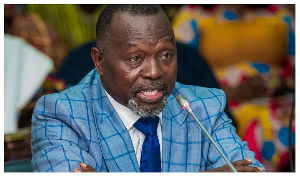The President of the Federation of Ghanaian Exporters (FAGE), Anthony Sikpa, has urged government to create a separate funding scheme that will provide long-term financing for producers and exporters to boost economic growth.
In an interview with the B&FT, he decried the inability of the Export Trade, Agricultural and Industrial Fund’s (EDAIF) to support many exporters as a result of pressure on the funds.
“Apart from EDAIF, there is no other dedicated long-term financing for exporters. Even the EDAIF itself was initially for exports alone, but currently that objective has been broadened to other areas so exporters are constrained when it comes to accessing funds,” he said.
“And now, with the coming of EXIM Bank, EDAIF is going to be swallowed. So we are brought to the fore to understand we need to consider the fact that EXIM will not meet all our financing needs. If you look at other countries that use the EXIM system, they are to help those producing and exporting to other countries so they can be more effective and competitive. Because of that, they have other financial schemes to help them,” he said.
Ghana, he said, must learn from other countries operating with the EXIM system that have other financial schemes to support farmers with funds to increase crop production as well as exports.
“The kind of financial packages we have here do not consider long-term financing; and that does not help businesses. For example, a crop like mango takes three years to start fruiting but there is no fund beyond the three years that farmers can access to help them grow their business,” he said.
“If you look at the US, for example, apart from the EXIM system they have got other facilities like the small business funds that support the growth of businesses so they will be able to produce for export. And these are some of the facilities that we are calling for to be provided here, if we really want to experience increases in crop production and exports.”
The agric sector continues to experience dwindling fortunes in the country, as output dropped from 31.8 percent in 2009 to 29.8 percent in 2010, 25.3 percent in 2011, 22.7 percent in 2012 and 21.3 percent in 2013. In 2014, the sector’s growth was a mere one percent.
The sector was expected to register a minimal growth of 0.04 percent by the end of 2015, against a target growth of 3.6 percent. With the population growth rate of about 2.5 percent per annum, the almost-zero percent growth rate in the agriculture sector for 2015 suggests that agriculture GDP per capita has declined substantially, raising concerns about long-term food security, agricultural employment, and sustainable development.
The revelations have raised concerns from many stakeholders, who are calling for government to devise new measures to save the ailing sector that is seen as the backbone of the country’s economy.
Head of Research, Monitoring and Evaluation at the Africa Centre for Energy Policy (ACEP), Dr. Ishmael Ackah, has advocated an agricultural investment plan that will yield meaningful returns to the economy.
Speaking at a stakeholders’ forum on the 2016 budget allocation to the agricultural sector in Takoradi, he said various allocations to the dominant economic sector has failed to yield the required output due to the absence of a strategic investment plan.
The plan, he said, should guide judicious use of resources as well as to check instances where monies for the sector are pushed into non-agricultural projects.
“The existence of an agriculture investment plan would ensure that resources are channeled into strategic segments of the sector which would yield fruitful returns.
“In the 2014 agriculture budget, for instance, about 70 percent of it went into the construction of four sea-defence wall projects instead of food crop production, hence the dwindling fortunes in the sector,” he said.
Business News of Friday, 11 March 2016
Source: B&FT

















